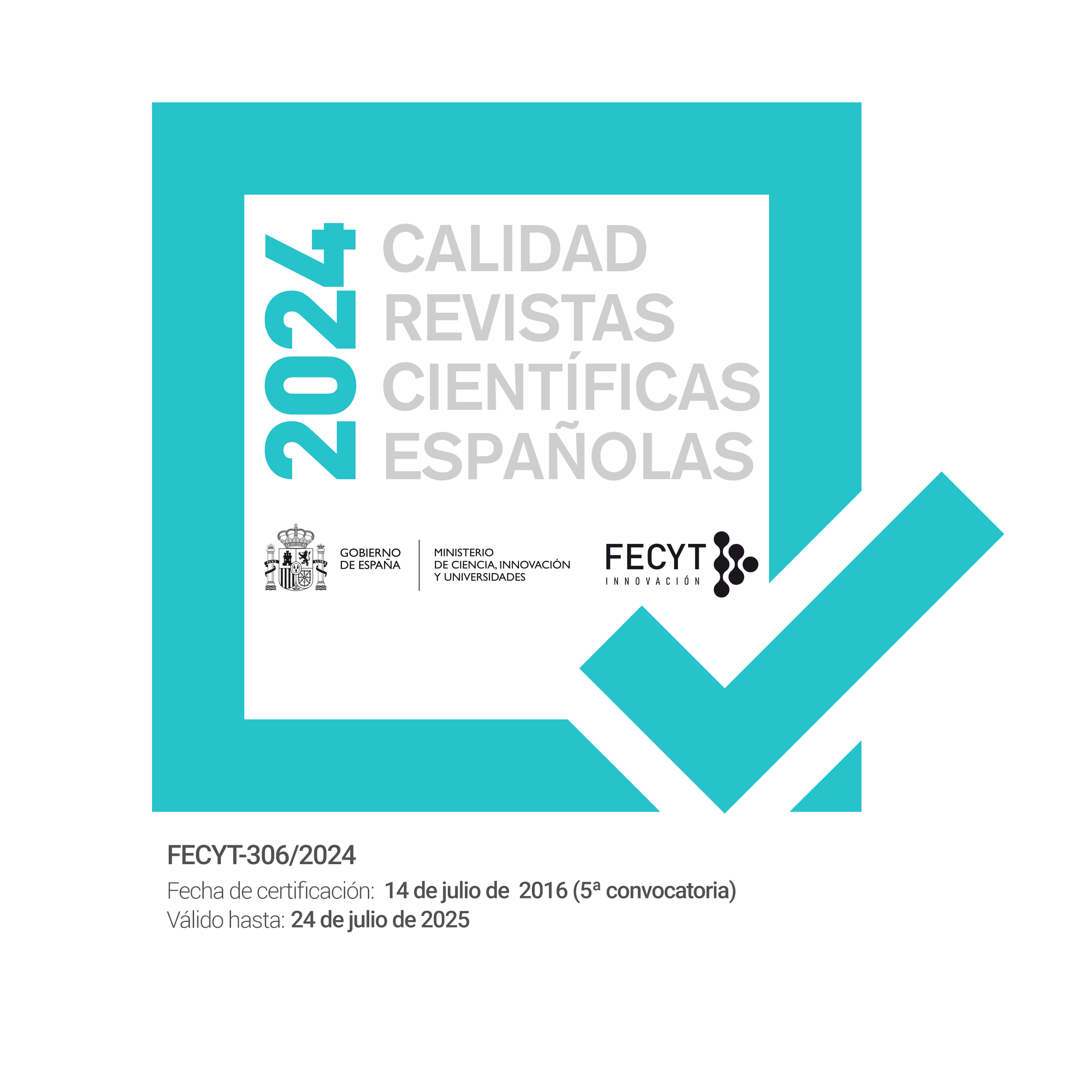To whom are the different forms of protest addressed? An analysis of the evolution of the targets and repertoires of social movements in 21st century Spain
DOI:
https://doi.org/10.22325/fes/res.2024.223Keywords:
repertoires of contention, protest targets, crisis, protest event analysis, correspondence analysisAbstract
In this article we explore the link between protest targets and contentious performances through a case study focused on Spain between 2000 and 2020. More specifically, we analyze the relationship between different protest targets and repertoires of contention, considering the transgression and amplitude of the latter, and observing the evolution of this relationship over time, especially in contexts of crisis. To do this, we employ a methodological strategy that combines protest event analysis with correspondence analysis. The application of these techniques to a case hitherto unexplored generate new evidence that allow us to advance in our knowledge on protest targets with the testing of some of the hypotheses offered by the specialized literature on this issue. Additionally, we suggest some further research lines.
References
Adell, R. (2011). La movilización de los indignados del 15-M. Aportaciones desde la sociología de la protesta. Sociedad y Utopía, 38, 125-140.
Beh, E., Lombardo, R. y Van der Velden, M. (2022). Package ‘CA3variants’. CRAN. https://cran.r-project.org/web/packages/CA3variants/index.html
Beh, E. J., y Lombardo, R. (2014). Correspondence Analysis. Theory, Practice and New Strategies. Nueva York: Wiley.
Beh, E. J., y Lombardo, R. (2021). Package ‘CAvariants’. CRAN. https://cran.r-project.org/web/packages/CAvariants/index.html
Beh, E. J. (2004). Simple Correspondence Analysis: A Bibliographic Review. International Statistical Review, 72(2), 257-284. https://doi.org/10.1111/j.1751-5823.2004.tb00236.x
Betancor, G., y González Santos, F. (2023). La configuración del campo de estudio de los movimientos sociales en España (1980-2020). Revista Española de Sociología, 32(1), a145. https://doi.org/10.22325/fes/res.2023.145
Bosi, L., y della Porta, D. (2022). Radicalization. En D.A. Snow, D. della Porta, B. Klandermans, y D. McAdam (Eds.), The Wiley-Blackwell Encyclopedia of Social and Political Movements (2nd ed.). Wiley-Blackwell. https://doi.org/10.1002/9780470674871.wbespm618
Dalton, R. (1988). Citizen Politics in Western Democracies. Chatham, NJ: Chatham House.
della Porta, D., y Diani, M. (2015). Los movimientos sociales. Madrid: CIS-UCM.
della Porta, D., y Mattoni, A. (2014). Patterns of Diffusion and the Transnational Dimension of Protest in the Movements of the Crisis: An Introduction. En D. della Porta, y A. Mattoni. (Eds.), Spreading Protest: Social Movements in Times of Crisis. ECPR Press.
Earl, J.; Martin, A.; McCarthy, J. D., y Soule, S. A. (2004). The Use of Newspaper Data in the Study of Collective Action. Annual Review of Sociology, 30, 65-80. https://doi.org/10.1146/annurev.soc.30.012703.110603
Fernández de Mosteyrin, L. (2013). Rodea el Congreso: un caso para explorar las bases del Estado securitario. En S. Aguilar (Ed.), Anuario del Conflicto Social 2012. Barcelona: UAB.
González Santos, F. 2021. Picking the Fight: How Social Movements Select Their Targets. Paper presentado en 15th Conference of the European Sociological Association (ESA), Barcelona.
Greenacre, M. J. (1984). Theory and Applications of Correspondence Analysis. Academic Press.
Greenacre, M. J., y Blasius, J. (eds.) (2006). Multiple Correspondence Analysis and Related Methods. Chapman & Hall/CRC.
Greenacre, M. J. (2017). Correspondence Analysis in Practice. CRC Press.
Higgs, N. T. (1990). Practical and innovative uses of correspondence analysis. The Statician, 40(2), 183-194. https://doi.org/10.2307/2348490
Husson, F., Lê, S., y Pagès, J. (2017). Exploratory Multivariate Analysis by Example Using R. Boca Ratón: CRC Press.
Hutter, S. (2014). Protest Event Analysis and Its Offspring. En D. Della Porta (2014). Methodological Practices in Social Movement Research. Oxford University Press.
Jasper, J. M., y King, B. G. (2020). Protestors and Their Targets. Temple University Press.
Joaristi, L. y Lizasoain, L. (2000). Análisis de correspondencias. Argitaletxea: La Muralla.
Kassambara, A. (2017). Practical Guide to Principal Component Methods. Multivariate Analysis II, STHDA.
Konig, R.P. (2010). Changing social categories in a changing society: studying trends with correspondence analysis. Quality & Quantity, 44, 409-425. https://doi.org/10.1007/s11135-008-9213-8
Koopmans, R. (1998). The Use of Protest Event Data in Comparative Research: Cross-national Comparability, Sampling Methods and Robustness. En D. Rucht, R. Koopmans, y F. Neidhardt, Acts of Dissent: New Developments in the Study of Protest (pp. 90-110). Sigma.
Koopmans, R., y Rucht, D. (2002). Protest Event Analysis. En B. Klandermans, y S. Staggenborg, Methods of Social Movement Research (pp. 231-260). University of Minnesota Press.
Köhler, H.-D., y Calleja Jiménez, J. P. (2015). “They don’t represent us!” Opportunities for a Social Movement Unionism Strategy in Spain. Relations industrielles / Industrial Relations, 70(2), 240-261. https://doi.org/10.7202/1031485ar
Kroonenberg, P. (1989). Three-mode Principal Component Analysis. DSWO Press.
Luque Balbona, D. y González Begega, S. (2016). Crisis económica y coaliciones anti-austeridad en España (2010-2014). Viejos y nuevos repertorios de protesta. Sociología del Trabajo, 87, 45-67. https://recyt.fecyt.es/index.php/sociologiatrabajo/article/view/52272
Martin, A. (2022). Targets. En D. A. Snow, D. della Porta, B. Klandermans, y D. McAdam (Eds.), The Wiley-Blackwell Encyclopedia of Social and Political Movements (2nd ed.). Nueva York: Wiley-Blackwell. https://doi.org/10.1002/9780470674871.wbespm211.pub2
Martin, A. W., McCarthy, J. D., y McPhail, C. (2009). Why targets matter: Towards a more inclusive model of collective violence. American Sociological Review, 74(5), 821-841. https://doi.org/10.1177/000312240907400507
McCarthy, J. D., Titarenko, L., Mcphail, C., Rafail, P. S., y Augustyn B. (2008). Assesing Stability in the Patterns of Selection Bias in Newspaper Coverage of Protest during the Transition from Communism in Belarus. Mobilization, 13(2), 127-146. https://doi.org/10.17813/maiq.13.2.u45461350302663v
Mueller, C. (1997). Media Measurement Models of Protest Event Data. Mobilization, 2(2), 165-184. https://doi.org/10.17813/maiq.2.2.n043476m01q7463u
Pardo, A., Ruiz, M. A. y San Martín, R. (2015). Análisis de datos en ciencias sociales y de la salud I (2da ed.). Síntesis.
Romanos, E., y Aguilar, S. (2016). Is Spain Still Different? Social Movements Research in a Belated Western European Democracy. En O. Fillieule, y G. Accornero (Ed.), Social movement studies in Europe: the state of the art. Oxford: Berghahn Books.
Romanos, E., y Sádaba, I. (2022). Evolución de la protesta en España (2000-2017): un análisis de sus ciclos y características. Revista Española de Investigaciones Sociológicas, 177, 89-110. https://doi.org/10.5477/cis/reis.177.89
Romanos, E., Sádaba, I., y Campillo, I. (2022). La protesta en tiempos de COVID. Revista Española de Sociología, 31(4), a140. https://doi.org/10.22325/fes/res.2022.140
Salehyan, I., y Stewart, B. (2017). Political Mobilization and Government Targeting: When Do Dissidents Challenge the State? Comparative Political Studies 50(7), 963-991. https://doi.org/10.1177/0010414016655541
Silic, A., Morin, A., Chauchat, J. H., y Basic, B.D. (2012). Visualization of temporal text collections based on Correspondence Analysis. Expert Systems with Applications, 39(15), 12143-12157. https://doi.org/10.1016/j.eswa.2012.04.040
Tarrow, Sidney (2012). Strangers at the Gates: Movements and States in Contentious Politics. Cambridge: Cambridge University Press.
Tilly, C. (1986). The Contentious French. Harvard University Press.
Tilly, C. (2008). Contentious Performances. Cambridge University Press.
Van Dyke, N., Soule, S.A., y Taylor, V. (2004). The targets of social movements: Beyond a focus on the state. Research in Social Movements, Conflict and Change 25, 27-51. https://doi.org/10.1016/S0163-786X(04)25002-9
Walker, E. T.; Martin, A. W., y McCarthy, J. D. (2008). Confronting the state, the corporation, and the academy: The influence of institutional targets on social movement repertoires. American Journal of Sociology, 114(1), 35-76. https://doi.org/10.1086/588737
Published
How to Cite
Issue
Section
License
Copyright (c) 2024 Eduardo Romanos, Daniel López Roche

This work is licensed under a Creative Commons Attribution-NonCommercial 4.0 International License.
• The transfer of the copyright of the article to Revista Española de Sociología.
• The assignment to the Revista Española de Sociología of the rights of commercial exploitation of the article to third parties both in the offset and digital formats, as well as to the search engines and platforms that may serve as intermediaries for the sale or knowledge of the article.




